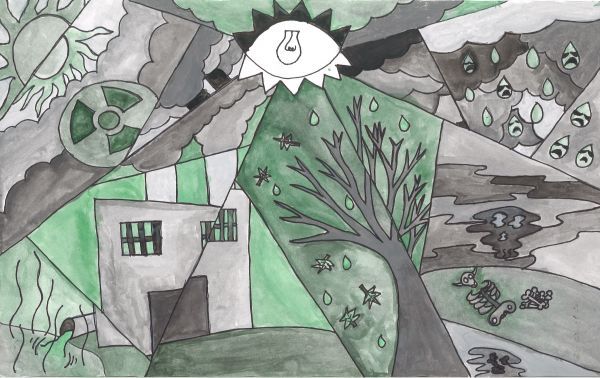To view this newsletter in your browser, click here.
Dear Educators,
This week's News Bite is inspired by one teacher's exciting exploration of global issues through visual art. Here are our featured lesson plans and updates on the Pulitzer Center's education events:
News Bite Lesson: Interpreting Global Issues through Picasso's "Guernica"
This week's News Bite lesson plan from Wheeling, IL art teacher Steve Hamann asks students to use Pulitzer Center's Global Gateways to research a global issue and interpret the issue through a tempera painting inspired by Pablo Picasso's Guernica. Hamann's lesson walks students through an analysis of Picasso's work, independent investigation of Pulitzer Center reporting and a final visual art project. It also includes a rubric for the students' final project. Check out Steve Hamann's blog post on the Pulitzer Center Education News blog for photos of students' final drawings, and more information about how he executed the project.
This week's featured lesson asks students to analyze how Daniella Zalcman used photography to interpret stories. As part of her project "Signs of Your Identity", Zalcman interviewed First Nation community members that survived abuse and trauma as part of the Canadian government's former system of residential schools for the children of First Nation people. She interpreted the interviews by blending a photograph of an interview subject with another image that expresses the history and identity of the subject. Students engage in photo analysis and discussion about the power of photography to cultivate understanding and empathy, and then create their own photo-blended images interpreting an interview with someone in their communities. See how this project was designed and executed at the Inspired Teaching Public Charter School in Washington, DC.
Education News: Middle School Students in Wheeling, IL Explore 'Artivism' Inspired by Pulitzer Center Global Gateways
“The role of an artist is varied, but one of the main purposes of an artist in the real world is to get one’s art “out there” to be seen by as many people as possible. This is where the Pulitzer Center came in,” art teacher Steven Hamann writes in a recent post for our Education News blog.
Hamann has been an art teacher in Wheeling, IL for over twenty years and his school district, District 21, has partnered with the Pulitzer Center for several years to introduce journalists to students and support district-wide projects. This year, Hamann led his middle school students in a project interpreting Pulitzer Center’s Global Gateways by creating visual art inspired by Pablo Picasso’s Guernica. The Global Gateways organize Pulitzer Center reporting into thematic categories, such as “Ocean Health” and “On War and Peace.” Students selected from amongst nearly 19 Gateways to inspire their projects.
Hamann explains that he chose Picasso’s Guernica as the technical inspiration for the students’ paintings because he wanted to engage students in a conversation about the role that art can play in igniting social dialogue. He writes, “It is believed that Picasso painted Guernica to bring to the public an image of the horrors of war...I wanted to articulate to my students that an artwork’s 'purpose' is not necessarily to be a beautiful object. An artwork can be a conduit to inform viewers of an issue facing our lives.”
Students interpreted a variety of subjects as part of their projects. In a caption for her piece “Alive Dead,” Michelle writes, “I used the Climate Change gateway from the Pulitzer website. My painting connects to Guernica because it shows how a problem is occurring just like Picasso did in Guernica. I made this artwork to show the difference between a normal day and a day affected by global warming."
Daniella G. used the “Religion and Power” Gateway as inspiration for her painting, “Equality of Gender and Religion.” In her caption, she writes, “I made the artwork because I believe that everyone should be treated equally, no matter what his/her gender or religion is.”
“The art project became so much more than a simple painting project. Students became engaged in global issues in a way I had not seen before.” Hamann writes in the conclusion of his post. My connection with the Pulitzer Center helped this lesson evolve into something great. It is my hope to utilize the Pulitzer Center in future art projects.”
Read more from Steve’s blog post.
See Steve’s lesson plan and apply this project in your classroom. Contact [email protected] if you’d like support promoting a final project.
Featured Project of the Week: "School Lunches in Brazil" by Rhitu Chatterjee
Click here to learn more about journalist Rhitu Chatterjee and her reporting about school lunches in Brazil. Create your own lesson plan using Rhitu's work with our Lesson Builder.
Want more education news? Sign up for our newsletter here.
